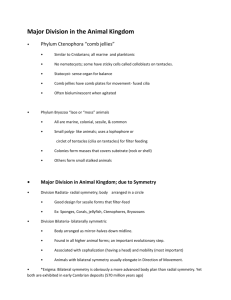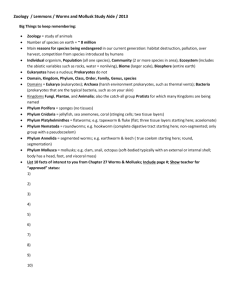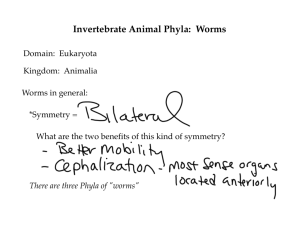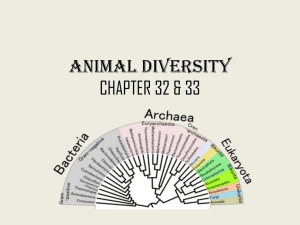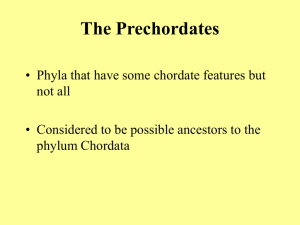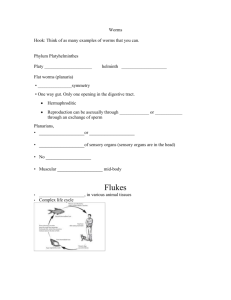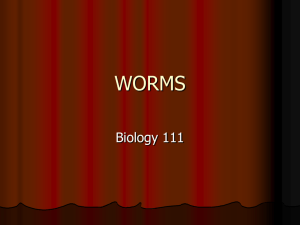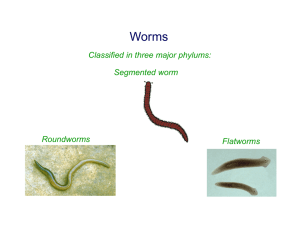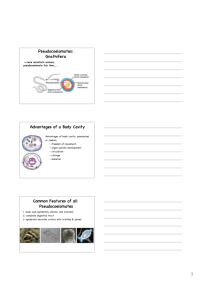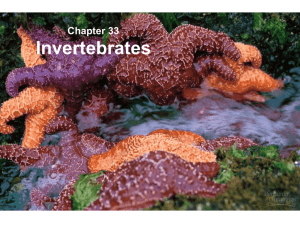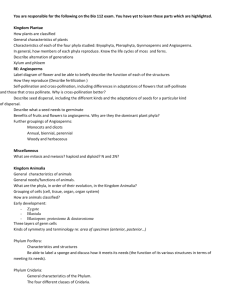MARINE WORMS - G. Holmes Braddock
advertisement
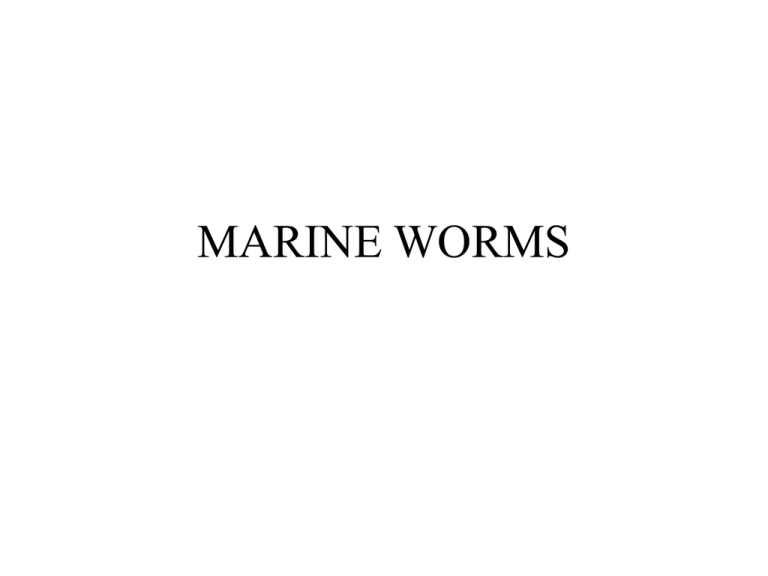
MARINE WORMS Common Characteristics of All Worm Phyla • Hydrostatic skeleton • Bilateral symmetry Phylum Platyhelminthes Flatworms • Dorsoventrally flattened – flat backs and bellies • Have real organs and organ systems • Ladderlike nerve cord with a simple brain • Saclike digestive system (only one opening) • 15,000 species – Turbellarians – mostly free swimming carnivores – Flukes (trematodes) – all are parasites – Tapeworms (cestodes) – parasites with long segmented bodies Phylum Nemertea – Ribbon Worms • Long flattened bodies • Complete digestive tract (separate mouth and anus) • Circulatory system with blood • Proboscis – long fleshy tube used to entangle prey • 900 species, mostly marine Phylum Nematoda Roundworms • Common in sediments or as parasites • Cylindrical body typically pointed at both ends • Complete digestive tract • 10,000-15,000 species but many could yet to be discovered Phylum Annelida – Segmented worms • • • • 13,000 species Complete digestive tract Efficient crawlers and burrowers Closed circulatory system – blood always remains in blood vessels (arteries, veins, capillaries) • Class Polychaeta – On each segment they have a pair of parapodia and setae (bristles) – Gills for respiration – 6000 species almost entirely marine – 4 to 10 cm in length – Deposit or suspension feeders – Some are tube dwelling • Class Hirudinea – Leeches – Mostly freshwater – Suckers at each end – No parapodia Other Marine Worms • Phylum Sipuncula – Peanut worms – Peanut shaped, deposit feeders • Phylum Echiura – Sausage shape, buried in mud • Phylum Pogonophora – Beard Worms – Lack a digestive system, symbiotic relationship with bacteria for obtaining nutrients • Vestimentiferans found at hydrothermal vents • Phylum Chaetognatha – Arrow Worms – 60 species, but common in plankton, fishlike body, voracious carnivores
